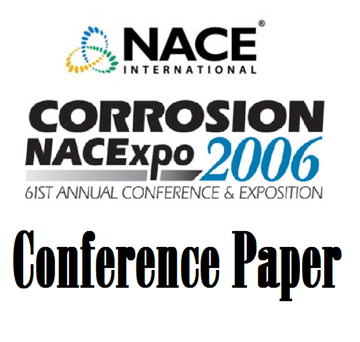Search
96420 WELDING TECHNIQUES FOR HIGH ALLOY AUSTENITIC STAINLESS STEEL
Also Purchased
96601 FABRICATION, WELDING AND HEAT TREATMENT OF NICKEL ALLOYS
Product Number:
51300-96601-SG
ISBN:
96601 1996 CP
$20.00
06208 THE FABRICATION PRACTICES & IMPACT OF WELDING ON CORROSION RESISTANCE OF HIGH NI-CR-MO ALLOYS
Product Number:
51300-06208-SG
ISBN:
06208 2006 CP
$20.00
06497 EFFECT OF WELDING RELATED MICROSTRUCTURE ON STRESS CORROSION CRACKING SUSCEPTIBILITY IN CAUSTIC SOLUTIONS
Product Number:
51300-06497-SG
ISBN:
06497 2006 CP
$20.00




